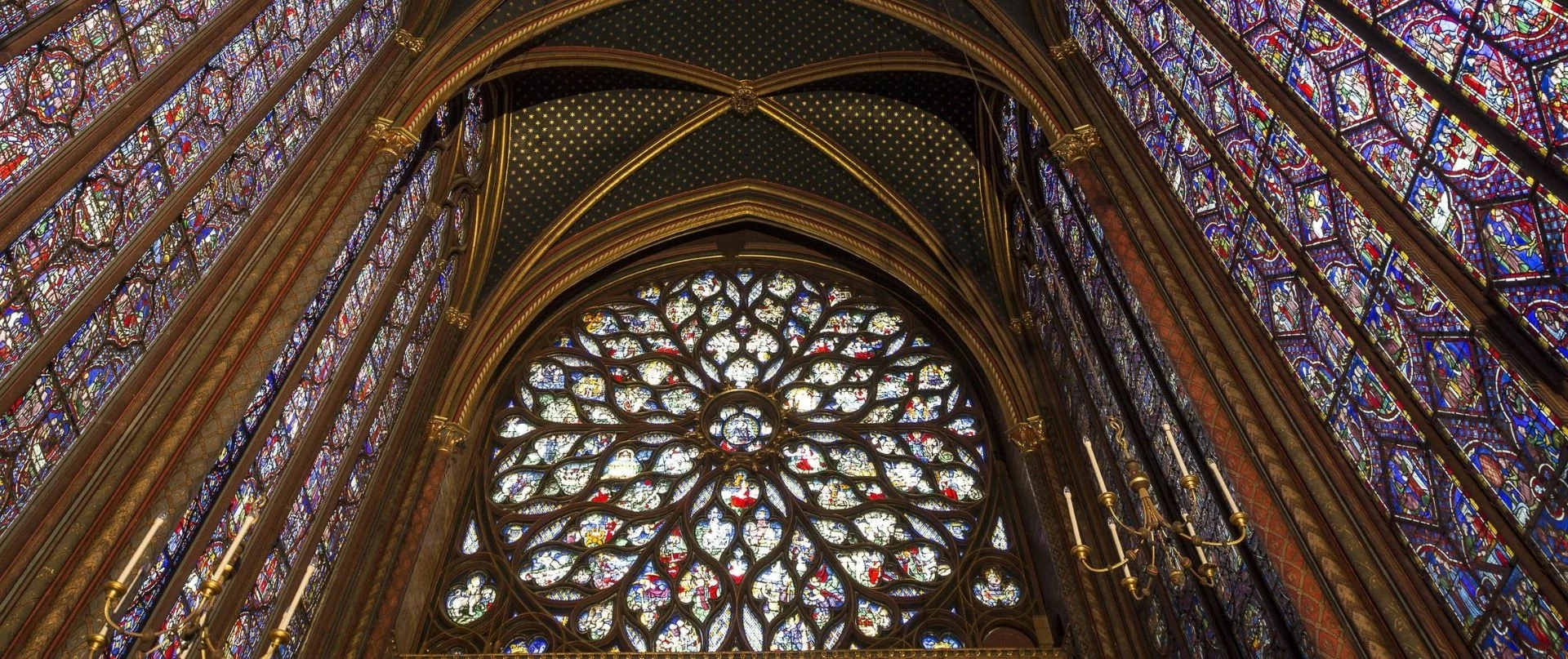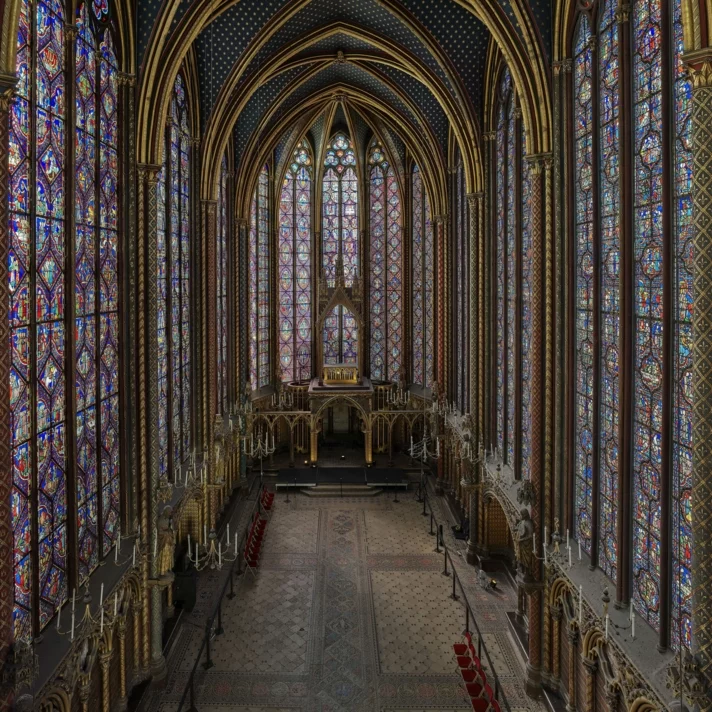Art & Architecture
article | Reading time5 min
Art & Architecture
article | Reading time5 min
Nicknamed the century of the cathedrals, the XIIIth century marks the apogee of the radiant Gothic.
The term radiant comes from the shape of the roses like those which one admires currently with Notre-Dame of Paris and which was to be originally on the western frontage of the Sainte-Chapelle before its replacement in XVe century by the rose in flaming Gothic which amazes us today.
Intimately linked to the demographic expansion and the rise of cities, it is an art that also asserts the royal power against feudalism throughout the kingdom.
The Sainte-Chapelle was commissioned by the king and inaugurated this princely patronage or "court art" which served to highlight the brilliance of its sponsors.
Goldsmithing, ironwork, painting, glasswork, sculpture, all the arts are combined in this building in the service of this symphony of colors and light.
The Sainte-Chapelle is probably one of the paradigms of this will which animates the builders to make the wall disappear: the pillars form a stone skeleton, the rest being of glass, letting an abundant light penetrate in order to establish in the religious buildings a feeling of immateriality and lightness through the more and more preponderant use of the stained glass.
DR - Centre des monuments nationaux
An architecture that seems to play with the laws of physics to rise ever higher. This makes us exclaim each time we enter a cathedral: "but how does it all fit?
This architecture is not directly addressed to humans but rather to God.
Each cathedral, each church must be a prefiguration of the divine world, the one described through the heavenly city (or new Jerusalem) by Saint John in his vision transmitted to him by God in Patmos during his exile: "The wall was built of jasper and the city was of pure gold, transparent as pure glass. The foundations of the city wall were adorned with all kinds of precious stones".
Verticality and the obviousness of the walls are the essential principles for understanding Gothic architecture in general and the radiant Gothic in particular. In the competition for the elevation of Gothic naves (the vault of the choir of the cathedral of Beauvais collapsed on November 12, 1284) that of Sainte-Chapelle still has a height of 20.60 meters.
By the way, you will notice that in the Sainte-Chapelle there are no external buttresses, an architectural innovation that was nevertheless precious in the Gothic period, but take a good look at the aisles of the lower chapel. Between the columns and the wall, there are struts, "interior buttresses" in a way, which have the same principle as their colleagues in the great cathedrals: to push the weight supported by the ribbed vaults and the keystone towards the exterior pillars: the buttresses.
Jean Feuille - Centre des monuments nationaux
Thanks to this process, the walls can be hollowed out for the benefit of very large windows and at the Sainte-Chapelle the glass surface occupies almost 670 square meters. Gothic architecture is a kind of external stone skeleton.
In the upper chapel, you don't feel the weight of the exterior buttresses, which are hidden inside by a subtle set of columns. We must not forget the role of iron in Gothic architecture, note that at the Sainte-Chapelle, the roofs are lined with metal tyrants and also inside the windows that allow the whole to maintain almost 800 years later.
It is also in this radiant gothic that sculptures gradually emancipate themselves from their architectural framework to reach a statue in the round. Like the smiling angel in the cathedral of Reims, and for us, the statues of the twelve apostles in the upper chapel.
© Romain Pech - Centre des monuments nationaux






